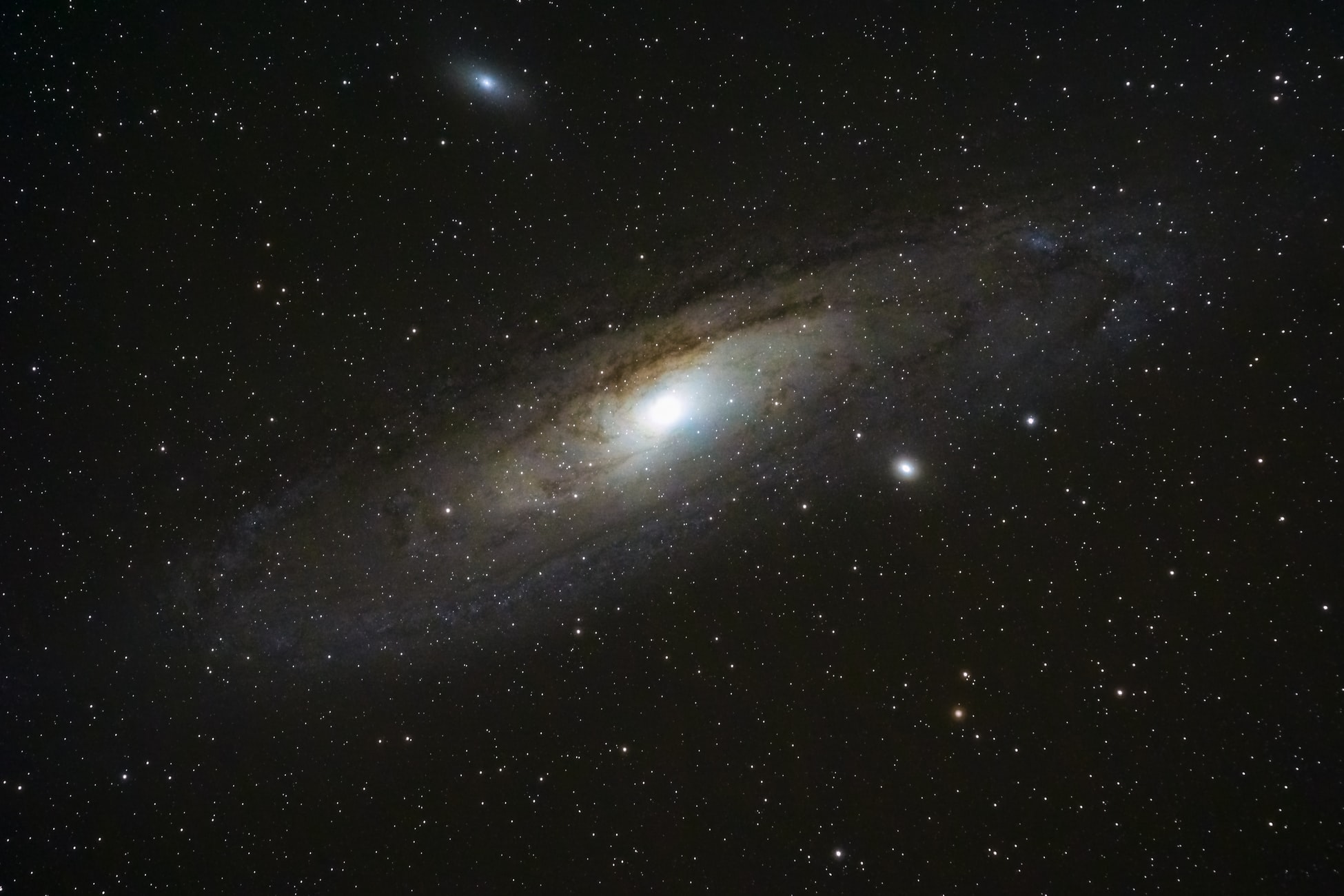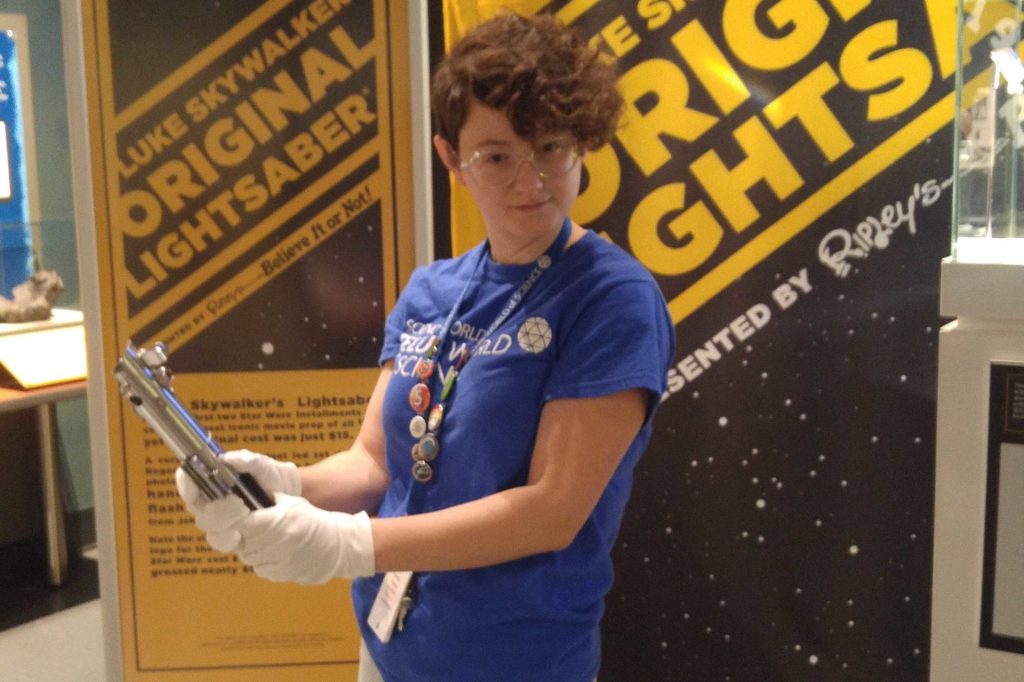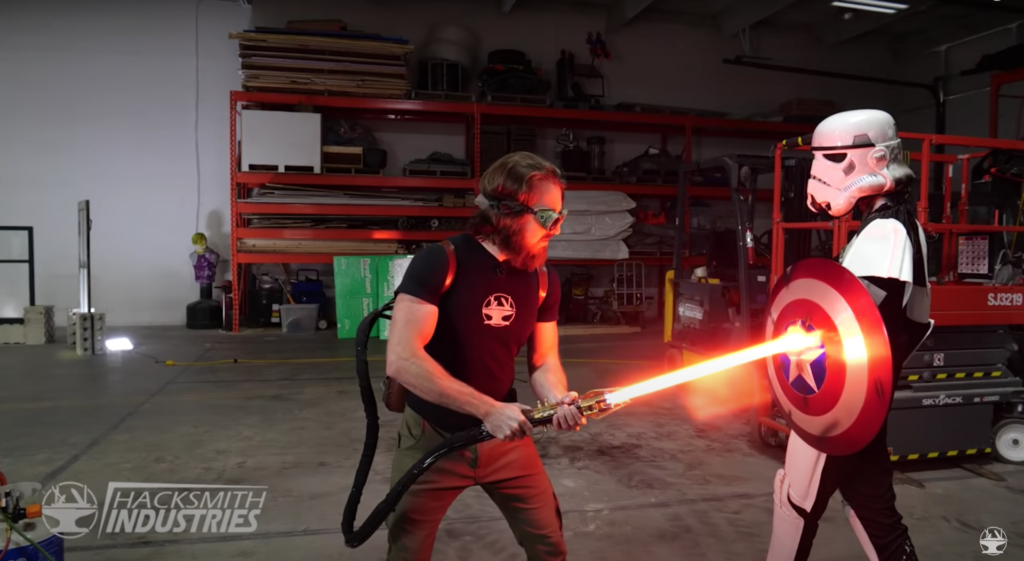In a galaxy far, far away with Jedis who keep the peace, Siths who plot to overthrow them, teddy bear insurgents called Ewoks and a princess who flies through space, the lightsaber is the most iconic weapon to wield. As Obi-Wan Kenobi says to Anakin Skywalker in Attack of the Clones, “This weapon is your life.”
The lightsaber is one of the most well-known pieces of science fiction weaponry in history. Taking a quiz to find out which lightsaber colour fits your personality is an age-old tradition, re-enacting the lightsaber battle between Luke Skywalker and Darth Vader in The Empire Strikes Back is a childhood rite of passage.
While Luke Skywalker’s original lightsaber was constructed from a vintage 1930s Graflex camera flash gun and unfortunately does not fire beams of energy outside of television screens (not even when it was displayed at Science World as part of The Science of Ripley’s Believe It or Not! exhibition in 2018!), it might be possible to create a real lightsaber that does.



